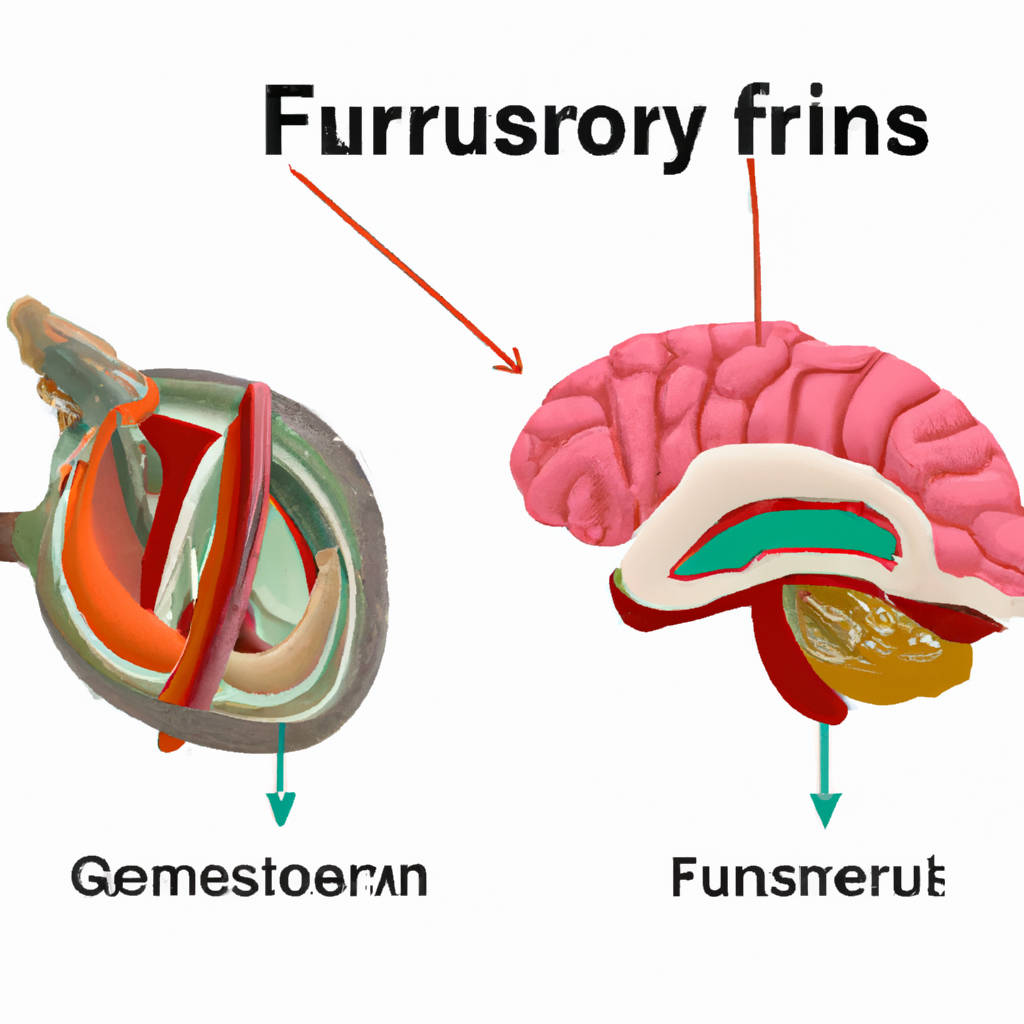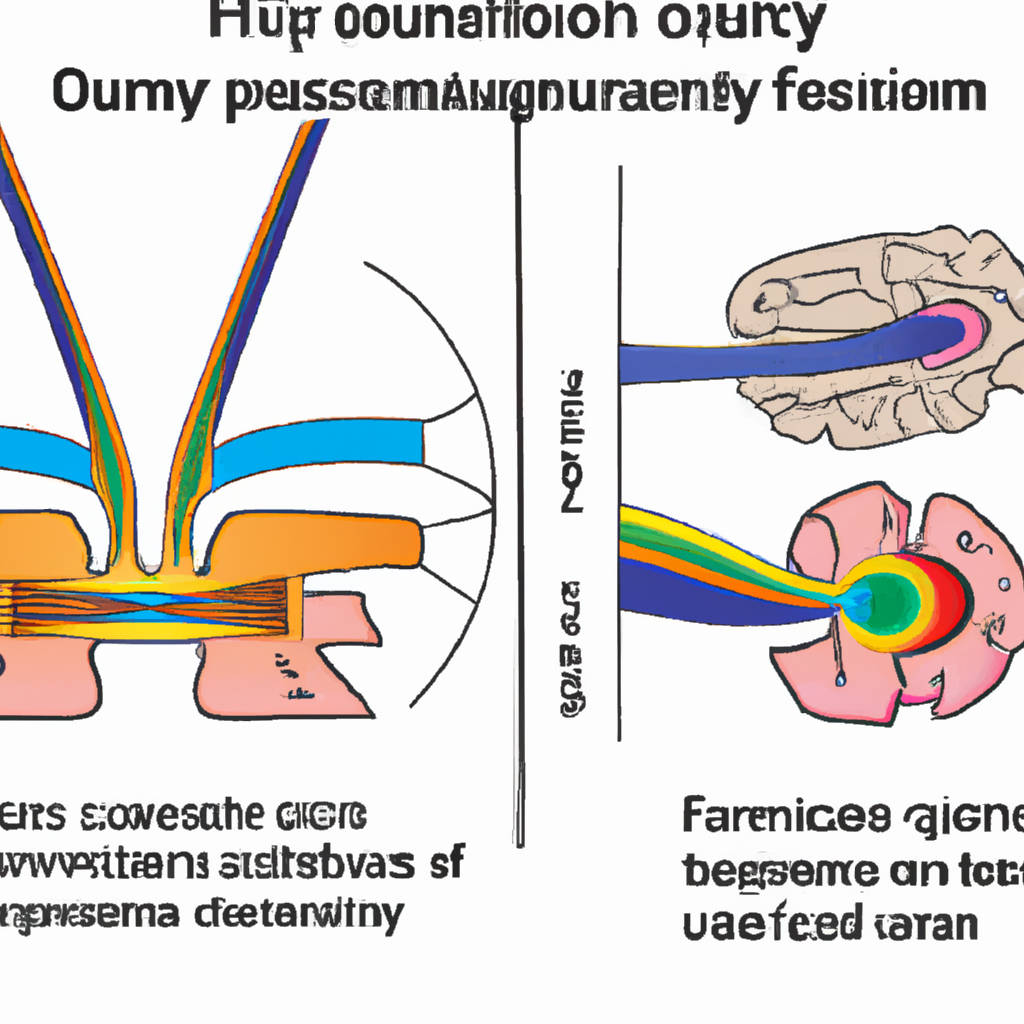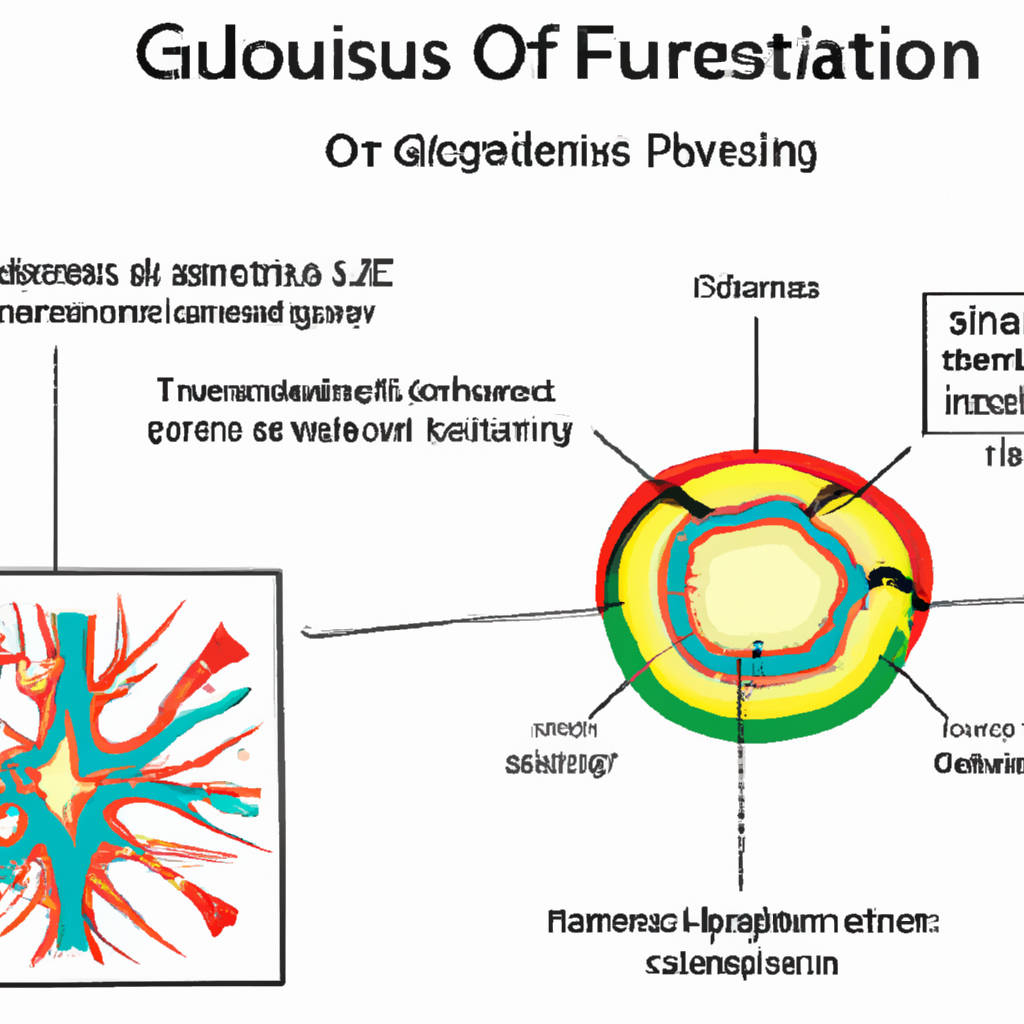The fusiform gyrus is a structure located in the brain, specifically in the occipital and temporal lobes. It is situated in the lower part of the temporal lobe, adjacent to the parahippocampal gyrus. The fusiform gyrus is a small, elongated structure that runs parallel to the lateral sulcus. It is involved in various functions related to visual processing, including facial recognition, object recognition, and word recognition.
The fusiform gyrus contains a specialized region known as the fusiform face area, which is responsible for processing facial features and recognizing faces. Additionally, the fusiform gyrus plays a role in reading and language processing, as well as in the perception of colors and shapes. Overall, the anatomy of the fusiform gyrus is complex and plays a crucial role in various cognitive functions related to visual perception and recognition.

White Matter Tracts Associated with the Fusiform Gyrus
White matter tracts associated with the fusiform gyrus play a crucial role in various cognitive functions such as facial recognition, object recognition, and language processing. The fusiform gyrus is located in the temporal lobe of the brain and is known for its involvement in the visual processing of faces and objects. White matter tracts are bundles of nerve fibers that connect different regions of the brain, allowing for efficient communication between them. In the case of the fusiform gyrus, these white matter tracts help facilitate the transfer of visual information from the occipital lobe (responsible for processing visual input) to the fusiform gyrus for further processing and interpretation.
Damage or disruption to the white matter tracts associated with the fusiform gyrus can result in difficulties with facial recognition, object recognition, and other visual processing tasks. For example, individuals with damage to these tracts may struggle to recognize faces or objects, leading to problems with social interactions and daily tasks. Additionally, disruptions in these tracts can also impact language processing, as the fusiform gyrus is involved in the recognition of written words and letters.
Research has shown that abnormalities in the white matter tracts connected to the fusiform gyrus are associated with various neurological and psychiatric conditions, including autism spectrum disorder, prosopagnosia (face blindness), and dyslexia. Understanding the role of these white matter tracts in the functioning of the fusiform gyrus can help researchers and clinicians develop more effective treatments and interventions for individuals with these conditions.
In conclusion, white matter tracts associated with the fusiform gyrus are essential for the proper functioning of cognitive processes such as facial recognition, object recognition, and language processing. Damage or abnormalities in these tracts can have significant implications for an individual’s ability to interpret and interact with the visual world around them. Further research into the role of these tracts in various neurological and psychiatric disorders is crucial for advancing our understanding of the brain and developing targeted interventions for those in need.
Functional Neuroanatomy: Roles of the Fusiform Gyrus in Perception and Cognition
The fusiform gyrus is a crucial region of the brain that plays a significant role in perception and cognition. Located in the temporal lobe, this structure is responsible for a variety of functions related to visual processing and recognition. One of its primary roles is in the recognition of faces, making it an essential component of our ability to distinguish between different individuals and interpret facial expressions.
Additionally, the fusiform gyrus is involved in the recognition of other complex visual stimuli, such as letters and words. This function is critical for reading and language comprehension. Furthermore, research has shown that the fusiform gyrus is also involved in higher-order cognitive processes, such as object recognition and categorization. For example, this region is activated when individuals are asked to identify objects or animals based on specific visual cues.
Overall, the fusiform gyrus plays a crucial role in our ability to perceive and make sense of the world around us. Its functions are essential for everyday tasks such as recognizing faces, reading, and categorizing objects. Understanding the roles of the fusiform gyrus in perception and cognition can provide valuable insights into how the brain processes visual information and contributes to our overall cognitive functioning.

Connectivity with Other Brain Regions: Networks Supporting Visual Processing and Recognition
Connectivity with other brain regions plays a crucial role in supporting visual processing and recognition. The brain is a complex network of interconnected regions that work together to process and make sense of the visual information received from the environment. One of the key brain regions involved in visual processing is the primary visual cortex located in the occipital lobe. This region receives input from the eyes and is responsible for the initial processing of visual information. However, the primary visual cortex does not work alone in processing visual stimuli. It is also connected to other brain regions such as the parietal and temporal lobes, which are involved in higher-level processing of visual information such as object recognition, spatial awareness, and memory retrieval.
These connections between different brain regions form networks that support the integration of various visual features and contribute to the recognition of objects and scenes. For example, when we see a familiar face, the visual information is processed in the primary visual cortex and then sent to the temporal lobe where the face is recognized based on stored memories and associations. Additionally, the parietal lobe helps us to understand the spatial relationships between different parts of the face and its surroundings.
Studies have shown that disruptions in the connectivity between different brain regions can lead to deficits in visual processing and recognition. For example, damage to the connections between the primary visual cortex and the temporal lobe can result in difficulties recognizing faces or objects. Similarly, disruptions in the connections between the primary visual cortex and the parietal lobe can lead to problems with spatial awareness and navigation.
Overall, the connectivity between different brain regions is essential for supporting visual processing and recognition. By understanding how these networks function and interact, researchers can gain insights into the mechanisms underlying visual perception and develop new strategies for treating visual disorders and improving visual performance.
Clinical Implications: Disorders and Conditions Involving the Fusiform Gyrus
The fusiform gyrus is a key region in the brain that plays a crucial role in various cognitive processes, including face recognition and object recognition. Disorders and conditions involving the fusiform gyrus can have significant clinical implications for individuals. One such disorder is prosopagnosia, also known as face blindness, which is characterized by the inability to recognize faces. This condition can have a profound impact on social interactions and relationships, as individuals with prosopagnosia may struggle to identify friends, family members, and even themselves in the mirror.
Another disorder involving the fusiform gyrus is object agnosia, which impairs the ability to recognize and identify objects. This can make everyday tasks challenging, as individuals may have difficulty distinguishing between common objects or understanding their purpose. Additionally, research has shown that abnormalities in the fusiform gyrus may be linked to autism spectrum disorders, as individuals with autism often exhibit difficulties in face processing and social interactions. Understanding the clinical implications of disorders and conditions involving the fusiform gyrus is essential for developing effective interventions and support strategies for affected individuals.
Cognitive rehabilitation techniques, such as facial recognition training and object categorization exercises, can help improve the quality of life for individuals with these conditions. Furthermore, advances in neuroimaging technology have allowed researchers to better understand the underlying mechanisms of these disorders, paving the way for more targeted treatments and interventions. By addressing the challenges associated with fusiform gyrus-related conditions, healthcare professionals can improve the overall well-being and social functioning of affected individuals.

Conclusion
In conclusion, it is important to consider the impact of our actions on others and the world around us. We must strive to make choices that align with our values and principles, while also being mindful of the potential consequences of our decisions. It is crucial to reflect on our behaviors and thought processes, and to constantly seek growth and self-improvement. By fostering a sense of empathy and understanding towards others, we can create a more harmonious and just society. Ultimately, the way we conduct ourselves and interact with others shapes the world we live in.
It is up to us to take responsibility for our actions and strive to make a positive impact on the world. In doing so, we can contribute to a more compassionate and equitable society for all. As we navigate the complexities of life, let us remember that every decision we make has the power to shape our future and the world around us. Let us strive to be conscious and intentional in our actions, and to always consider the greater good in all that we do. By working towards a more just and equitable world, we can create a better future for ourselves and for generations to come. Let us continue to challenge ourselves and others to be the best versions of ourselves, and to always strive for a more compassionate and just world.
